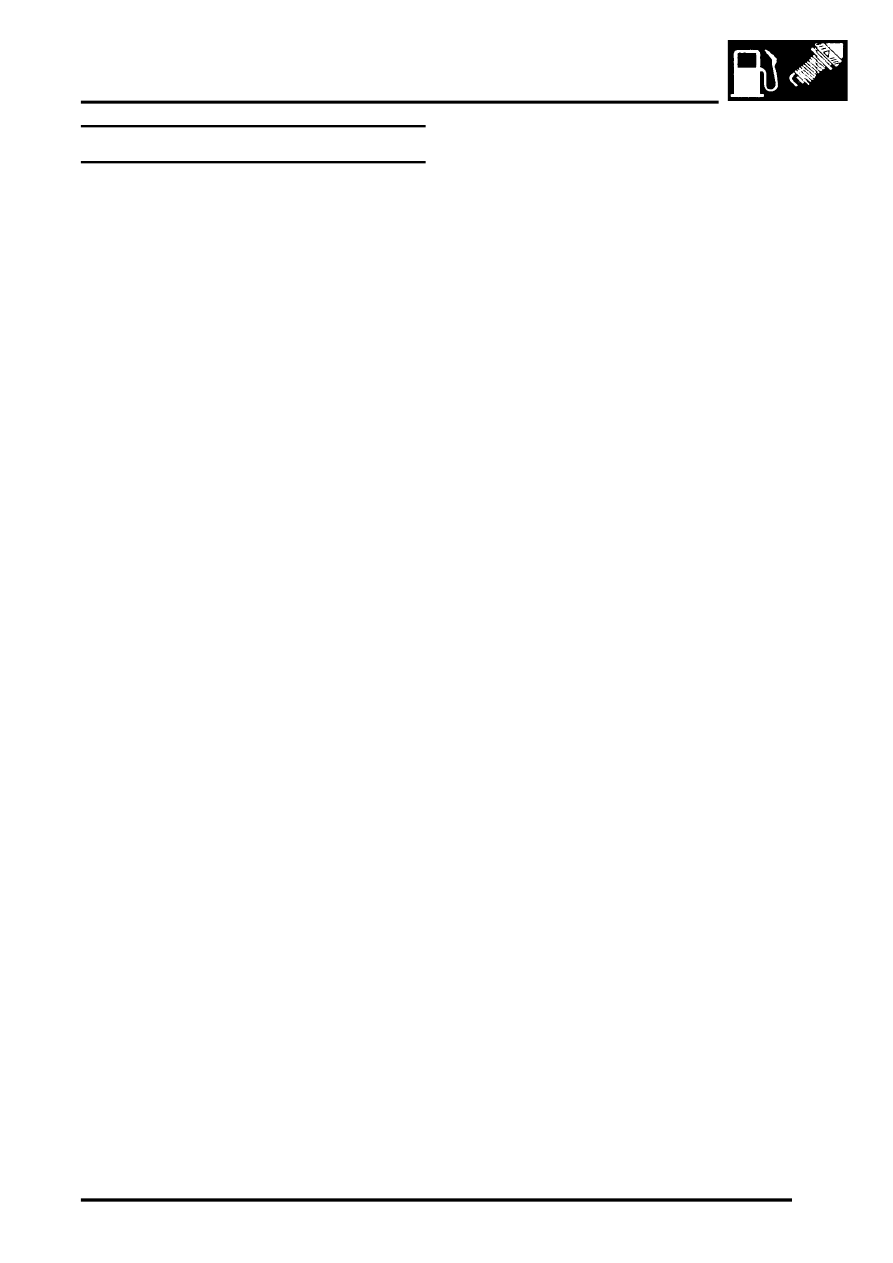Freelander System Description and Operation

FUEL DELIVERY SYSTEM - K SERIES KV6
DESCRIPTION AND OPERATION
19-3-3
Description
General
The fuel delivery system consists of a fuel tank containing an electric fuel pump to supply fuel at a constant pressure
to the engine fuel rail. A pipe, routed along the underside of the vehicle, connects the fuel pump to the fuel rail.
Fuel Tank
The fuel tank is located on the underside of the vehicle, forward of the rear suspension subframe. The tank is
constructed from moulded plastic and is retained by a tubular cradle which is secured to the vehicle floorpan with four
bolts. A heat shield is installed on the LH side of the support cradle to protect the tank from heat radiated by the
exhaust system. A fire shield is installed on the RH side of the support cradle.
The fuel tank has a nominal capacity of 60 litres (15.85 US gallons). An aperture in the top surface of the tank allows
for the fitment of the fuel pump.
On vehicles from 2002.5 model year – The fuel tank capacity is increased by 4litres (0.8 gallons) to 64 litres (14.0
gallons). This is achieved by modifications to the tank venting system.
The top of the fuel tank filler tube is located in the RH rear wing panel and is closed by a lockable filler cap. The bottom
of the filler tube is connected to the tank by a flexible tube secured with clamps. a flap valve in the fuel tank, at the
connection point with the filler tube, prevents vapour from escaping once refuelling is completed and also prevents
fuel from escaping if the filler cap or filler tube are damaged in an accident.
During refuelling and with the fuel filler cap installed, the tank is ventilated to atmosphere through vent pipes that
connect an Onboard Refuelling Vapour Recovery (ORVR) valve and the three roll over valves in the tank to the
Evaporative emissions (EVAP) system.
EMISSION CONTROL - K SERIES KV6, DESCRIPTION AND OPERATION, Description.
The location of the vent pipe connections on the fuel tank ensures an air space remains in the tank after filling, to allow
for heat expansion of the fuel.
The ORVR valve and roll over valves are float valves that prevent fuel from entering the EVAP system vent pipes due
to fuel slosh or if the vehicle overturns.
On vehicles from 2002.5 model year – Modifications are introduced to increase the capacity of the fuel tank. The
modification comprises a change to the vent line from the forward ROV. The vent line from the ROV now connects to
the vent line between the two-way valve and the vapour separator. Venting from the forward ROV is no longer
restricted by the two-way valve. The ROV now controls the refuelling nozzle shut-off. When the ROV closes, pressure
in the tank increases shutting off the refuelling nozzle. This modification allows an additional 5 litres (1.1 gallons) of
fuel to be added to the tank.
There is a fabric sleeve fitted to the filler pipe inlet in the tank. This reduces the amount of vapour produced during
refuelling and subsequent load on the EVAP canister.
NOTE: When defuelling the tank with a vacuum pump, the fabric sleeve can become inverted and may initially cause
problems during subsequent refuelling by shutting off the refuelling nozzle prematurely. After several attempts at
refuelling, the fabric sleeve should straighten out and allow refuelling as normal.
